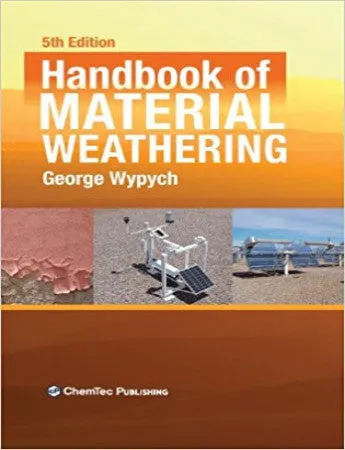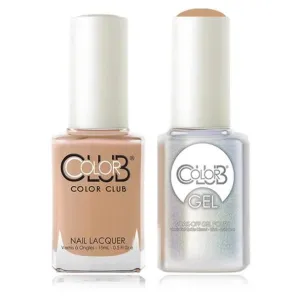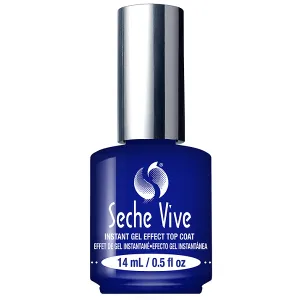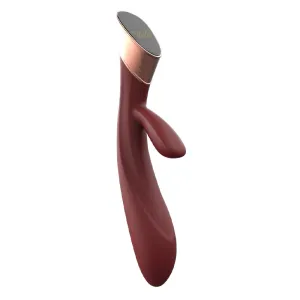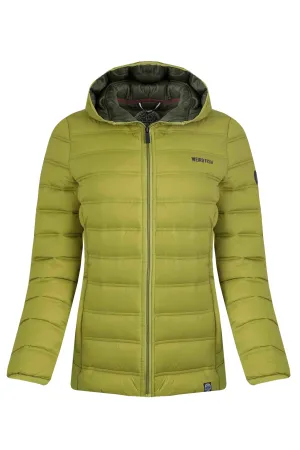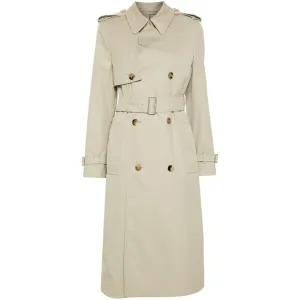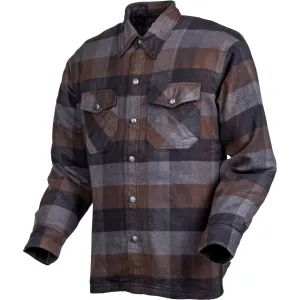Product Details
+
Description
Author: George WypychISBN 978-1-895198-62-1
5th Edition
Pages: 826
Figures: 795
Tables: 64
Summary
This 5th edition of Handbook of Material Weathering contains systematic updates of knowledge generated in more than last 25 years when the 1st edition was prepared.The information required for professional use has been growing so rapidly that additional books had to be written to accommodate essential knowledge for implementation in technological processes used to manufacture products, which deteriorate on exposure to weathering stress factors.
This edition contains 20 chapters, which can be divided into the following groups:
• Theory (photophysics and photochemistry)
• Stress factors (parameters of exposure, measurements in assessment of weathering conditions, and climatic conditions)
• Methods of weathering (laboratory degradation studies, weathering cycles, sample preparation, weathering data interpretation, lifetime prediction, and artificial weathering versus natural exposure)
• Methods of testing of weathered samples (effect of weathering on material properties and testing methods of weathered specimens)
• Weathering of polymers (data on 52 most important polymers, including mechanisms of degradation, effect of thermal history, characteristic changes in properties with graphical illustrations, and tables with numerical data)
• Weathering of products (data on 42 groups of industrial products, including their required durability, lifetime expectation, relevant degradation mechanisms, and characteristic changes with graphical illustrations)
• Effect of additives on weathering (12 groups of additives are discussed)
• Effect of environmental stress cracking (parameters controlling ESC, mechanisms, methods of testing, and effect on materials)
• Specific topics (suitability of weathered materials for recycling, interrelation between corrosion and weathering, and methods of study and prevention of deterioration of historical monuments made out of stone)
The above information is based on the thorough review of published papers, patents, and other relevant sources updated to the most recent data and information.
In addition to this book, 3 additional volumes contain supplementary information:
Handbook of Material Biodegradation, Biodeterioration, and Biostabilization by Falkiewicz-Dulik, M, Janda, K, and Wypych, G., 2010
Handbook of UV Degradation and Stabilization by Wypych, G, 2011
Atlas of Material Damage, Wypych, G, 2012
The first two books contain information relevant for protection of materials against biological and environmental stress factors. The Atlas of Material Damage has focus on structure and morphology of commercial materials and methods of damage prevention by tailoring morphology.
This set of monographic sources was prepared for research chemists in the photochemistry field, chemists and material scientists designing new materials, users of manufactured products, those who control the quality of manufactured products, and students who want to apply their knowledge to real materials. The books are invaluable for regulating agencies and patent and litigating attorneys.
Handbook of Material Weathering is now used in about 100 countries, although frequently old editions (as seen from citations) are still in use, which do not contain up-to-date information.
Preface
The first edition of this book was published by ChemTec Publishing in 1990. The book had 18 chapters and 518 pages filled with the most up-to-date information on the subject of material weathering available in 1990.
Considering the size of the book and typesetting, the present edition is at least 3 times larger, in spite of the fact that two chapters were omitted from the fourth edition: Chapter 17. Stabilization and Stabilizers and Chapter 18. Biodegradation. Even without these two chapters the present 5th edition is larger than the previous edition. The reason is quite obvious − the field is systematically growing with new data, methods, and discoveries happening every day.
The reasons for eliminating the two chapters are as follows:
• If these two chapters would still be included in the book, the book would need to have two volumes which makes a book more difficult to use (separate table of contents and indices).
• In anticipation of the need for specialized monographic sources, the two chapters mentioned above were not updated in the previous edition, so information was already lacking novelty.
• Short chapters can only present brief review of the subject, whereas in applications detailed information is needed
• Two handbooks were published by ChemTec Publishing on the subjects of the omitted chapters:
Handbook of Material Biodegradation, Biodeterioration, and Biostabilization by
Falkiewicz-Dulik, M, Janda, K, and Wypych, G., 2010
Handbook of UV Degradation and Stabilization by Wypych, G, 2011
These two books give much broader and comprehensive information, such as it is required today, especially considering rapid changes which occurred recently because of health and safety concerns (biostabilization) and new discoveries (UV stabilization).
In addition, to present volume and the above two books, there is also a new book:
Atlas of Material Damage, Wypych, G, 2012
This book was written to emphasize importance of the material structure in photodegradation and photostabilization and also to account for the morphological changes which occur when materials degrade. This addition makes narrative of material degradation more comprehensive, showing new ways to deal with unstable materials.
I hope that the information provided in these four books will help readers to advance their studies on particular subjects of their research and that the results of these studies will be implemented in the future editions of these books, since we try to report current developments to foster future discoveries.
Table of Contents
1 Photophysics1.1 Nature of radiation
1.1.1 Radiative energy
1.1.2 Radiation intensity
1.1.3 Radiation incidence
1.2 Absorption of radiation by materials
1.2.1 General principles
1.3 Fate and utilization of absorbed energy
1.3.1 Deactivation
1.3.2 Intramolecular energy transfer
1.3.3 Intermolecular energy transfer
1.3.4 Luminescence
1.4 Radiative processes involving dimers
1.5 Modeling and photophysical data
References
2 Photochemistry
2.1 Typical routes of photochemical reactions
2.1.1 Photodissociation
2.1.2 Photooxidation
2.1.3 Peroxide and hydroperoxide conversions
2.1.4 Norrish type I and II reactions
2.1.5 Photo-Fries rearrangement
2.1.6 Photo-Fenton
2.1.7 Photosubstitution
2.1.8 Photoaddition
2.1.9 Photoelimination
2.1.10 Photodimerization
2.1.11 Photocondensation
2.1.12 Photoisomerization
2.2 Photochemical reactivity and quantum yield
2.3 Excitation of excited state
2.4 Parameters of photochemical reactions
2.6 Quenchers and photosensitizers
References
3 Parameters of Exposure
3.1 Radiation
3.1.1 The source
3.1.2 Solar radiative emission
3.1.3 Effect of orbital variations on energy supply
3.1.4 Interplanetary and near Earth space
3.1.5 Stratosphere
3.1.6 Troposphere
3.2 Temperature
3.3 Water
3.4 Atmosphere composition
3.5 Pollutants
3.5.1 Nitrogen compounds
3.5.2 Oxygen species
3.5.3 Hydrogen species
3.5.4 Carbon oxides
3.5.5 Sulfur-containing components
3.5.6 Chlorine-containing components
3.5.7 Particulate materials
3.6 Biological substances
3.7 Water pollutants
3.8 Stress
3.7 Cooperative action of different parameters
References
4 Measurements in Assessment of Weathering Conditions
4.1 Radiation
4.1.1 Measuring equipment and methods of measurement
4.1.2 Standards
4.2 Sunshine duration
4.3 Temperature
4.4 Relative humidity
4.5 Time of wetness
4.5 Rain
4.6 Pollutants
4.6.1 Carbon dioxide
4.6.2 Particulate matter
4.6.3 Sulfur dioxide
4.6.4 Nitrogen oxides
4.6.5 Carbon monoxide
4.6.6 Ozone
References
5 Climatic Conditions
5.1 Introduction
5.2 Radiation
5.3 Sunshine duration
5.4 Temperature
5.5 Precipitation
5.6 Relative humidity
5.7 Wetness time
5.8 Pollutants
5.9 Surface soiling
References
6 Methods of Outdoor Exposure
6.1 Introduction
6.2 Climatic conditions and degradation rate
6.3 Variability of weather conditions and its impact on the strategy in outdoor
exposures
6.4 Influence of specimen properties
6.5 Typical methods of outdoor exposure
6.5.1 Exposure sites
6.5.2 Exposure racks
6.5.3 Exposure of products and components
6.6 Other parameters of exposure
6.7 Relevant standards
References
7 Laboratory Degradation Studies
7.1 Introduction
7.2 Light sources
7.3 Filters
7.4 Radiation: delivery, monitoring and control
7.5 Temperature control
7.6 Humidity control
7.7 Specimen spraying
7.8 Specimen racks and holders
7.9 Weathering equipment
7.10 Correlation between different devices
7.11 Pollutants
7.12 Precision of studies
References
8 Weathering Cycles
References
9 Sample Preparation
References
10 Weathering Data Interpretation. Lifetime Prediction
References
11 Artificial Weathering Versus Natural Exposure
References
12 Effect of Weathering on Material Properties
12.1 Mass loss
12.2 Depth of degradation
12.3 Mechanical properties
12.4 Changes of color and optical properties
12.5 Surface changes
12.6 Molecular weight
12.7 Chemical composition of surface and bulk
12.8 Morphology and structure of surface layers
12.9 Glass transition temperature
12.10 Self-healing
References
13 Testing Methods of Weathered Specimen
13.1 Visual evaluation
13.2 Microscopy
13.3 Imaging techniques
13.4 Gloss
13.5 Color changes
13.6 Visible spectrophotometry
13.7 UV spectrophotometry
13.8 Infrared spectrophotometry
13.9 Near infrared spectroscopy
13.10 Raman spectroscopy
13.11 Nuclear magnetic resonance
13.12 Electron spin resonance
13.13 Mass spectrometry
13.14 Positron annihilation lifetime spectroscopy
13.15 Chemiluminescence, fluorescence, and phosphorescence
13.16 Atomic absorption spectroscopy
13.17 WAXS and SAXS
13.18 X-ray photoelectron spectroscopy, XPS
13.19 X-ray microtomography
13.20 Mass change
13.21 Density
13.22 Contact angle
13.23 Diffusion of gases and water transport in polymer
13.24 Electrical properties
13.25 Ultrasonic measurements
13.26 Thermal analysis
13.27 Rheological properties of materials
13.28 Other physical parameters
13.29 Tensile strength
13.30 Elongation
13.31 Flexural strength
13.32 Impact strength
13.33 Creep and constant strain tests
13.34 Residual stress
13.35 Scratch and mar resistance
13.36 Other mechanical properties
13.37 Surface roughness
13.38 Molecular weight
13.39 Gas and liquid chromatography
13.40 Titrimetry
13.41 Dehydrochlorination rate
13.42 Gel fraction
13.43 Oxygen uptake
13.44 Water absorption, porosity
13.45 Microorganism growth test
13.46 Environmental stress cracking resistance
References
14 Data on Specific Polymers
14.1 Acrylonitrile butadiene styrene, ABS
14.2 Acrylonitrile styrene acrylate, ASA
14.3 Alkyd resins
14.4 Acrylic resins
14.5 Cellulose
14.6 Chitosan
14.7 Epoxy resins
14.8 Ethylene propylene rubber, EPR
14.9 Ethylene vinyl acetate copolymer, EVAc
14.10 Ethylene propylene diene monomer, EPDM
14.11 Fluoropolymers
14.12 Melamine resins
14.13 Phenoxy resins
14.14 Polyacrylamide
14.15 Polyacrylonitrile
14.16 Polyamides
14.17 Polyaniline
14.18 Polycarbonates
14.19 Polyesters
14.20 Polyethylene
14.21 Polyethylene, chlorinated
14.22 Poly(ethylene glycol)
14.23 Polyfluorene
14.24 Polyimides
14.25 Poly(lactic acid)
14.26 Polymethylmethacrylate
14.27 Polyoxyethylene
14.28 Polyoxymethylene
14.29 Poly(phenylene oxide)
14.30 Poly(phenylene sulfide)
14.31 Poly(p-phenylene terephthalamide)
14.32 Poly(p-phenylene vinylene)
14.33 Polypropylene
14.34 Polystyrenes
14.35 Polysulfones
14.36 Polytetrafluoroethylene
14.37 Polythiophene
14.38 Polyurethanes
14.39 Polyvinylalcohol
14.40 Polyvinylchloride
14.41 Poly(vinylidene fluoride
14.42 Poly(vinyl methyl ether)
14.43 Styrene acrylonitrile copolymer
14.44 Silicones
14.45 Polymer blends
14.46 Rubbers
14.46.1 Natural rubber
14.46.1 Polybutadiene
14.46.2 Polychloroprene
14.46.3 Polyisoprene
14.46.4 Polyisobutylene
14.46.5 Styrene butadiene rubber
14.46.6 Styrene butadiene styrene rubber
References
15 Effect of Additives on Weathering
15.1 Fillers and reinforcing fibers
15.2 Pigments
15.3 Plasticizers
15.4 Solvents and diluents
15.5 Flame retardants
15.6 Impact modifiers
15.7 Thermal stabilizers
15.8 Antioxidants
15.9 Antimicrobial additives
15.10 Curatives, crosslinkers, initiators
15.11 Catalysts
15.12 Compatibilizer
15.12 Impurities
15.13 Summary
References
16 Weathering of Compounded Products
16.1 Adhesives
16.2 Aerospace
16.3 Agriculture
16.4 Appliances
16.5 Automotive parts
16.6 Automotive coatings
16.7 Coated fabrics
16.8 Coil coated materials
16.9 Composites
16.10 Concrete
16.11 Conservation
16.12 Construction materials
16.13 Cosmetics
16.14 Dental materials
16.15 Electronics and electrical materials
16.16 Environmental pollutants
16.17 Foams
16.18 Food
16.19 Gel coats
16.20 Geosynthetics
16.21 Glass and glazing materials
16.22 Greenhouse film
16.23 Hair
16.24 Laminates
16.25 Medical equipment and supplies
16.26 Military applications
16.27 Molded materials
16.28 Packaging materials
16.28.1 Bottles
16.28.2 Containers
16.28.3 Crates and trays
16.28.4 Films
16.29 Paints and coatings
16.30 Pavements
16.31 Pharmaceutical products
16.32 Pipes and tubing
16.33 Pulp and paper
16.34 Roofing materials
16.35 Sealants
16.36 Sheet
16.37 Siding
16.38 Solar cells and collectors
16.39 Textiles
16.40 Windows
16.41 Wire and cable
16.42 Wood
References
17 Recycling
17.1 Effect of degradation on recycling
17.2 Re-stabilization of material for recycling
17.3 Multilayer materials
17.4 Removable paint
17.5 Chemical recycling
References
18 Environmental Stress Cracking
18.1 Definitions
18.2 Parameters controlling ESC
18.2.1 Material composition
18.2.2 Morphology and dimensions
18.2.3 Processing and performance conditions
18.2.4 Solubility parameters of solvents and polymers
18.2.5 Diffusion
18.2.6 Load and internal stress
18.2.7 Time
18.2.8 Temperature
18.3 Mechanisms of environmental stress cracking
18.4 Kinetics of environmental stress cracking
18.5 Effect of ESC on material durability
18.6 Methods of testing
References
19 Interrelation Between Corrosion and Weathering
References
20 Weathering of Stones
References
Index




